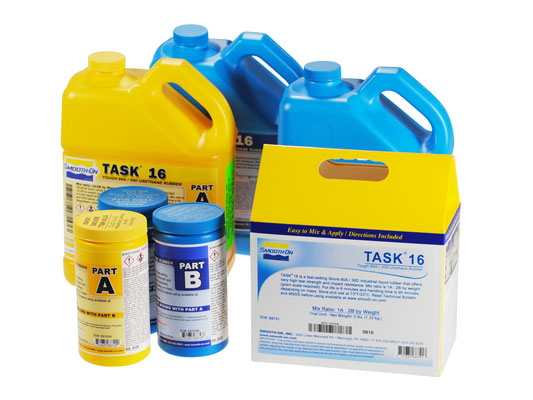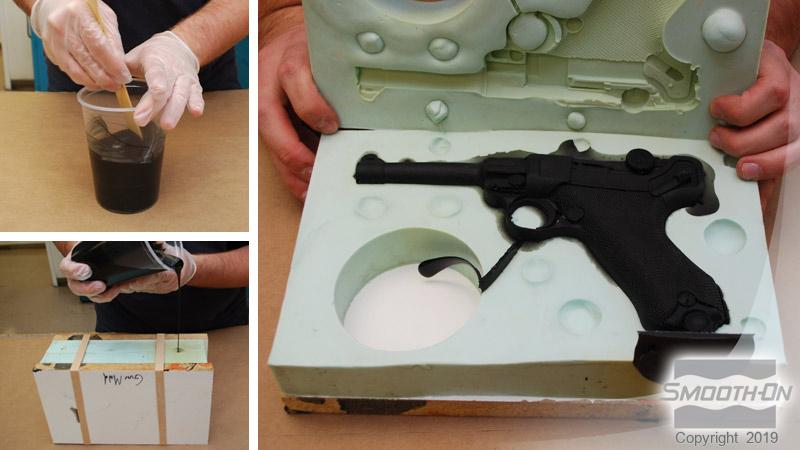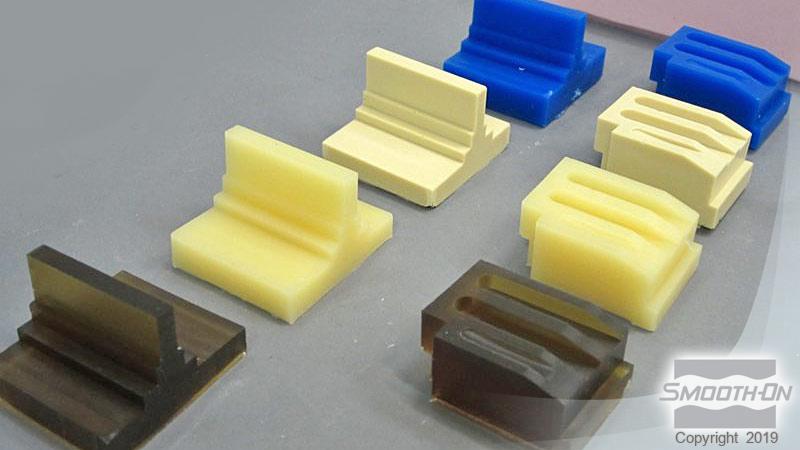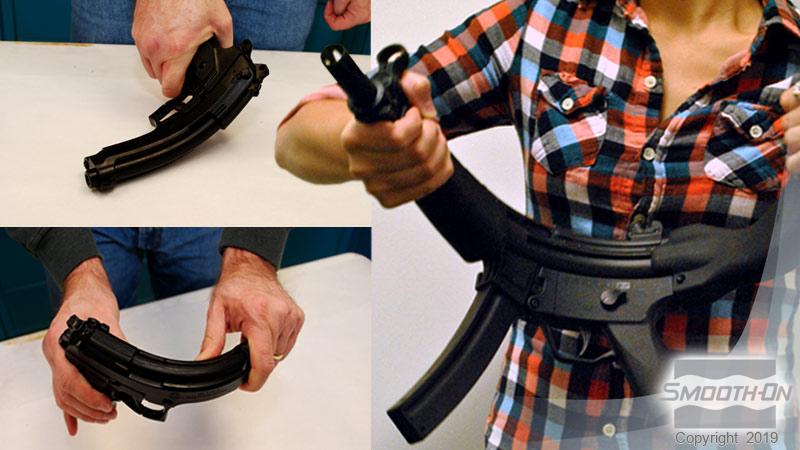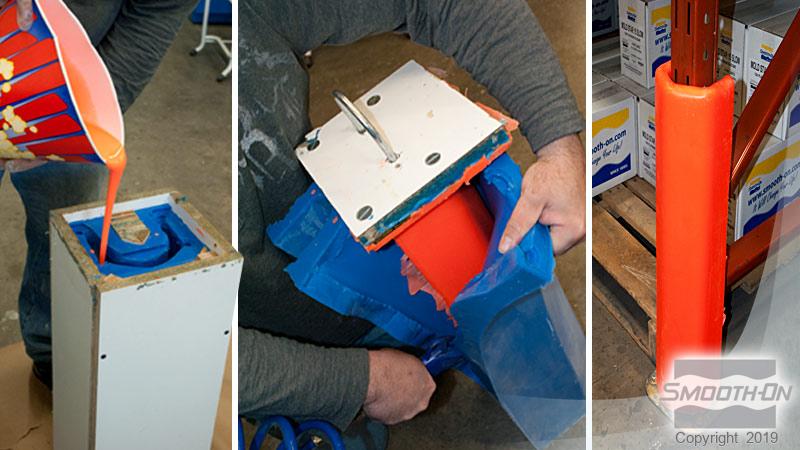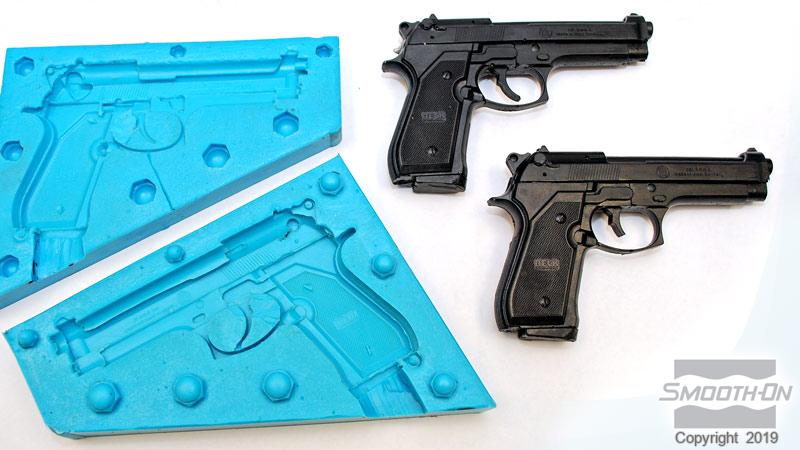TASK™ 16
TASK™16 is a low odor, fast-setting Shore 80A/30D urethane that offers very high tear strength, impact resistance and wear resistance. TASK™16 is phthalate free, mercury free and MOCA free. Mixed one part A to two parts B by weight, TASK™16 pours easily. Working time is 6 minutes and handling time is 90 minutes at room temperature. Cured rubber has exceptional performance characteristics and dimensional stability. TASK™16 can be colored with SO‑Strong™ or Ignite™ colorants.
TASK™16 is suitable for making fast mechanical parts, gaskets, wheels and pullies, impact resistant props, and archival master models. It is also used to make fast, wear resistant rubber molds for casting concrete or concrete stamping pads. TASK™16 is also an excellent choice for rotocasting to create hollow semi-rigid castings.
IMPORTANT: Cured TASK™16 will inhibit the cure of liquid platinum silicone. You can not pour platinum silicone into cured TASK™16. Tin silicone must be used if you intend to pour silicone against cured TASK™16.
› Click here for more TASK™ resin products.
Instructions
These products have a limited shelf life and should be used as soon as possible. This material should be stored and used at room temperature (73°F/23°C). This material is moisture sensitive, so relative humidity should be below 50%. Wear safety glasses, long sleeves and rubber gloves to minimize contamination risk. Room size ventilation is necessary.
Applying A Release Agent - A release agent is necessary to facilitate demolding when casting into or over most surfaces. Use a release agent made specifically for mold making (Universal™ Mold Release or Mann’s Ease Release™ 200 available from Smooth-On or your Smooth-On distributor). A liberal coat of release agent should be applied onto all surfaces that will contact the plastic.
IMPORTANT: To ensure thorough coverage, apply release and brush with a soft brush over all surfaces. Follow with a light mist coating and let the release agent dry for 30 minutes.
Smooth-On silicone rubber molds usually do not require a release agent unless casting silicone into the mold. Applying a release agent will prolong the life of the mold.
Selecting A Mold Rubber - Pour into a urethane rubber mold (release agent required) or a silicone rubber mold. To prevent cure inhibition, post-cure newly made tin silicone molds for 8 hours at 60°C/150°F and let cool prior to casting resin. If you are unsure about surface compatibility, a trial casting should be made.
Because no two applications are quite the same, a small test application to determine suitability for your project is recommended if performance of this material is in question.
MEASURING & MIXING...
Liquid urethanes are moisture sensitive and will absorb atmospheric moisture resulting in bubbles in the cured rubber. Mixing tools and containers should be clean and made of metal or plastic.
Shelf life of product is drastically reduced after opening. Immediately replacing the lids on the containers after dispensing product will prolong the shelf life of the unused product. XTEND-IT™ Dry Gas Blanket (available from Smooth-On) will prolong the shelf life of unused liquid urethane products.
IMPORTANT: Pre Mix the Part B before using every time.
Measuring - An accurate gram scale is required to measure out 1A:2B. Inaccurate measurement can result in material partially curing or not curing at all.
Hand Mixing - After weighing and dispensing the required amounts of Parts A and B into mixing container, mix thoroughly for at least 90 seconds making sure that you scrape the sides and bottom of the mixing container several times. Pour entire quantity into a new, clean mixing container and mix again as directed above.
Mechanical Mixing - drill mix using a Turbine mixer or equal for 30 seconds followed by careful hand mixing for 30 seconds as directed above. Then, pour entire quantity into a new, clean mixing container and repeat mixing procedure.
Be Aware - material pot life is 6 minutes at 73°F/23°C. Pot life at elevated temperatures will be less. Do not delay between mixing and pouring.
Although this product is formulated to minimize air bubbles when cured, vacuum degassing will further reduce entrapped air. A pressure casting technique using a pressure chamber can yield totally bubble free castings. Contact Smooth-On or your distributor for information about vacuum degassing or pressure casting.
Pouring - For best results, pour your mixture in a single spot at the lowest point of the containment field. Let the rubber seek its level. A uniform flow will help minimize entrapped air.
Curing - Allow the mold or casting to cure (at least 90 minutes) at room temperature (73°F/23°C) before demolding. Do not cure rubber in temperatures less than 65°F/18°C. Cure time can be reduced with mild heat or by adding Smooth-On Kick-It™ Cure Accelerator. This material will reach full cure in 24 hours at 73°F/23°C.
Post Curing - Although not necessary, post curing will enhance physical and performance properties. After material has cured at room temperature, heat while still in the mold to 150°F (65°C) for 4 to 8 hours. If using this rubber as a mold material, a release agent should be applied to the mold before each casting. The type of release agent to use depends on the material being cast. Contact Smooth-On or your Smooth-On distributor for more information.
Performance & Storage - Fully cured rubber is tough, durable and will perform if properly used and stored. The physical life of the rubber depends on how you use it. Contact Smooth-On directly with questions about this material relative to your application.
Related Categories: Urethane Resins
Related Series: TASK™ Series – High Performance Casting Resins
How-To Articles
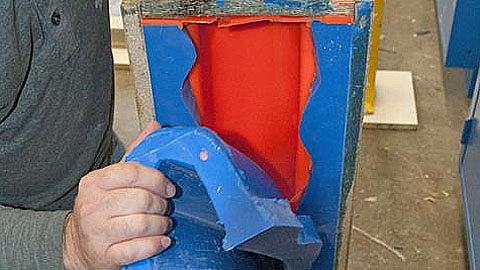
How to Use TASK™ 16 Rubber for Impact Resistant Bumpers
Owen Morris, contacted Smooth-On for a material to make custom bumpers that would help minimize the damage to their rack guards.
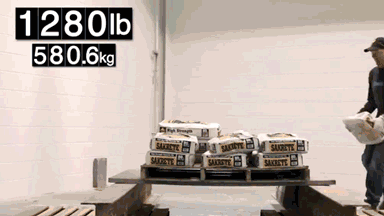
How To Make a Custom Concrete Countertops using GFRC
Learn how to make extremely strong concrete countertops with Forton® VF-774
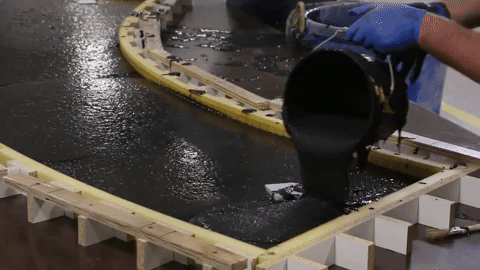
How To Make Concrete Countertops for a Trade Show Display
In this video we show you how we created new concrete countertops for a custom pergola display.
